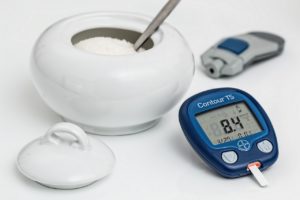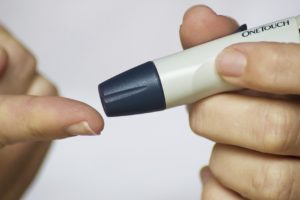Diabetes is now the third-leading cause of death in the United States, according to a new study from the University of Pennsylvania. The disease and its complications lead to roughly 12 percent of deaths in the nation, the study finds.
This number is much higher than medical professionals initially thought. Diabetes was the seventh leading cause of death in 2013, and in 2010 estimates for diabetes-related deaths was a mere 2.8 percent.
 Samuel Preston, a professor of sociology at the University of Pennsylvania and one of the lead authors of the study, thinks that this should be a wake-up call. “Another way of saying that is if diabetes were eliminated as a disease process,” he says, “the number of deaths would decline by 12 percent.”
Samuel Preston, a professor of sociology at the University of Pennsylvania and one of the lead authors of the study, thinks that this should be a wake-up call. “Another way of saying that is if diabetes were eliminated as a disease process,” he says, “the number of deaths would decline by 12 percent.”
The reason for the seeming increase in deaths caused by the disease is because it isn’t listed as the underlying cause of death as often as it should be. “It’s difficult for a physician to say, ‘If this person didn’t have diabetes, he wouldn’t have died,’ but we are able to do that looking at national statistics,” says Preston. “When someone who died had multiple conditions, the certifier must choose one as the underlying cause of death. That choice is, to some extent, arbitrary.”
It is rare that people die directly from diabetes. They usually die from a condition that is caused by diabetes, whether it be heart disease, stroke, kidney disease, etc. Many times diabetes is not listed on the death certificate as the underlying cause.
Andrew Stokes, co-author of the study, notes that the main way scientists and researchers monitor population health in the United States and around the world is through mortality statistics. His research has led him to conclude that the under-reporting of diabetes as an underlying cause of death obscures the national health burden of the disease. “Our work aims to reveal that diabetes is a much more important cause than is appreciated,” Stokes says.
Research Methods
The researchers estimated the number of deaths attributable to diabetes using two representative samples of U.S. adults who were surveyed in the National Health and Nutrition Examination Survey (NHANES) and in the National Health Interview Survey (NHIS). The researchers then linked individuals from these surveys to their deaths reported in the National Death Index.
The NHIS provided researchers only with self-reported cases of the presence of the disease, whereas the NHANES contains data on both self-reports and individuals with high hemoglobin A1C levels, a biomarker which indicates presence of the disease. This is an important distinction to make, as “Drawing on both data sources provides a more comprehensive picture of the contribution of diabetes to deaths in the United States than using either source alone,” according to the report.
The research team found a “high degree of consistency” between the data sets. The proportion of deaths attributable to diabetes was 11.5 percent using the data from NHIS. Self-report data from NHANES showed a 11.7 percent proportion. The data set with the hemoglobin A1C marker from NHANES showed a proportion of deaths attributable to the disease at 11.8 percent. However, it was listed as the underlying cause of death in only 3.3 to 3.7 percent of the deaths.
Preston and Stokes believe that widespread focus and ramped up intervention are needed to address the issue of diabetes and its toll on the American population.
“We need something on a population scale,” Stokes says. “It’s a major issue.”

 Diabetes the No. 3 Cause of Death in US, Study Finds
Diabetes the No. 3 Cause of Death in US, Study Finds


 “Help Me, Helen”
“Help Me, Helen”

 “As Tears Go By” by Marianne Faithfull
“As Tears Go By” by Marianne Faithfull














